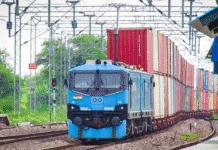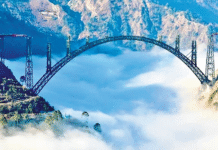Metro-Neo Project: An Introduction
It is a Mass Rapid Transit System (MRTS) that aims to provide a comfortable, rapid, energy-efficient and less noisy transport medium in the city of Nashik. The project is proposed to be implemented by Maharashtra Metro Rail Corporation Ltd (Maha-Metro). In 2019, a feasibility report was made in consultation with the Nashik Municipal Corporation. The DPR (Detail Project Report) for the project has been prepared by M/s RITES Limited which, after approval of the State Government was sent to Government of India for sanction. The Report has identified a 32 km main route and a 24 km feeder route for the implementation of Metro-Neo project.
As per the feasibility report and DPR, the Metro Neo project at Nashik envisioned for a train service every two minutes. The main elevated corridors will have a capacity of 15,000 PHPDT (peak hour peak direction traffic). Metro-Neo stations are expected to be similar to other Metro rail stations and will house staircases, lifts, escalators, and information display for the passengers. The station entry and exit will be provided on both sides of the road.
Electric Bus Coaches
Metro-Neo service will comprise of electric bus coaches with a length of 18 to 25 metres. It will have a capacity to carry 180 to 240 passengers at a time. AC electric coaches will draw power from an overhead electric wire with 600-750 V DC supply for power supply. The buses will also comprise of automatic door closing system, level boarding, comfortable seats, passenger announcement system, and an information system with an electronic display.
Feeder Buses
The length of the feeder buses is proposed to be around 12 to 13 metres. It would have a capacity to carry 60 to 70 passengers at a time. For power supply the coaches will operate on battery on the feeder routes and will also run on the Main corridors and get charged during running by overhead traction. The Feeder buses will run on the existing roads on two feeder routes– Satpur Colony via Garware to Mumbai Naka and Nashik Road via Nandur Naka to Shivaji Nagar.
Metro-Neo in Maharashtra’s Nashik:
Metro-Neo in Nashik will have two corridors. These are as follows:
- Corridor 1: A 10-km long route having 10 stations– starting from Gangapur, Jalapur, Ganpat Nagar, Kale Nagar, Jehan Circle, Thatte Nagar, Shivaji Nagar, Panchavati, CBS and ending at Mumbai Naka.
- Corridor 2: A 22-km long route having 20 stations– starting from DHRUV Nagar, Shramik Nagar, Mahindra, Shaneshwar Nagar, Trimbak Rd, Satpur Colony, MIDC, ABB Circle, Parijat Nagar, MICO circle, CBS, Sharda Circle, Dwarka Circle, Gayatri Nagar, Ambedkar Nagar, Upnagar, Nehru Nagar, Datta Mandir, and ending at Nashik Road.
CBS and Gaganpur will be common interchange stations for both the corridors
Why Metro Neo
- Heavy Metro rail is economical for PHPDT greater than 15,000.
- Bus transit system cater upto 5,000 PHPDT which is insufficient.
- Rail based LRT, tram system address traffic requirement upto 15,000 PHPDT.
- Peculiar requirement of Indian cities require an innovative and cost effective solution.
- Metro-Neo is India centric solution for tier 2/3 cities for 8,000 PHPDT and extendable upto 10,000
- MoHUA has issued standard specifications in Nov 2020 for rubber tyredθ metro coaches running on OHE named Metro neo for use in tier 2/3 Indian cities.
Features of Metro Neo
- Dedicated RoW at Grade
- Tyred electric coaches on concrete slab
- Length of coaches 18 m or 24 m
- Can run on battery upto 20 Km
- Safety and comfort at par with Metro
- Depot away from alignment
- Cost reduction, No AFC, No PSD, small stations
- ATP signalling with anti collision features
Broad Metro Neo Specifications
- Dedicated RoW of 8m
- Platform width of 1.12m, emergency side evacuation
- Low floor rolling stock around 10T axle load
- Caters PHPDT 8,000 and extendable upto PHPDT 10,000
- Upto 250 pax capacity for 24m coach and 200pax for 18m coach at AW3 loading
- 750VDC OHE twin wire electrification. Coaches can run on battery where OHE is not feasible.
- ATP signalling with anti collision features and central control, CCTV surveillance in× stations
Above standards ensure the quality, safety, punctuality and comfort levels at par with heavy Metro.
Cost aspects of Metro Neo (Nashik DPR @ 2019 level) compared to Nagpur Metro actual costs
| Sr. No. | Sub – System | Description | Metro Neo (Rs. Cr/KM) | Heavy Metro (Rs. Cr/KM) |
| 01. | Viaduct | Smaller viaduct | 31.5 | 36 |
| 02. | Stations | Concourse eliminated, platforms height is reduced | 4.4 | 55 |
| 03. | Track | No track | 0 | 9 |
| 04. | Traction & PSI | 4.5 | 11 | |
| 05. | Rolling Stock | Tyred electric coaches | 7.5 | 26 |
| 06. | Signalling | ATP signalling with anti collision | 0.5 | 10 |
| 07. | Depot | Less depot area | 2 | 5.5 |
| 08. | Misc. Utilities | 1 | 4 | |
| 09. | Telecom & Security | Smaller Stations with optimal telecom services | 1.5 | 5 |
| 10. | Ticket vending (AFC) | No AFC gates | 0.5 | 3 |
| 11. | Taxes, Contingencies, design, charges etc., | 18.5 | 57.5 | |
| Total (Approx) INR | 71 | 222 |
Few examples of Metro Neo Transport system globally
- Zurich (Switzerland)
- Riyadh University, Saudi Arabia
- Lyon City (France)
- Salzburg (Austria)
- San Francisco (USA)
Nashik Metro Neo Project Key Features
- 2nos of Lines (Corridor 1 is 22km, Corridor 2 -10 km)- Total Length 32 km.
- Number of stations -29; Number of depots – 1.
- Total Project Cost (DPR)- Rs.2,100.60 Cr ≃ (Rs 71 Cr per km).
- DPR already approved by the Government of Maharashtra (GOM).
- Project currently under sanction of the Government of India (GOI)
Various other cities under consideration for implementing Metro Neo in India
- Warangal (Telangana)
- Bamnoli Village to Kirtinagar in Delhi
- Nashik
Conclusion
Metro Neo is a trolleybus system with overhead electric traction, which runs on elevated or at-grade cement roads. It is an innovative transport system, which will be implemented for the first time in India in Nasik by Maha Metro. It is seamless, fast, reliable and cost effective. It will provide travel experience of international standards at par with Metro systems. It is an articulated / bi-articulated trolley bus system with overhead electric traction. The buses will be air-conditioned with an automatic door closing system, level boarding, comfortable seats, passenger announcement and an information system with an electronic display.
The Metro Neo would be a state-of-art, comfortable, energy-efficient, minimal noise pollution and environment-friendly system. It has been designed to negotiate sharp curves and steep gradient with minimal requirement of rehabilitation. The system can be upgraded to Light Metro with incremental cost input in future as per traffic demand. It is an innovative and pioneering project in India and will be the first MRTS to run on rubber tyres. The government of India on 21.08.2019 constituted a committee, under the chairmanship of Dr Brijesh Dixit, MD of Maha Metro, for standardization of detailed specifications for a Rubber-Tyred Mass Rapid Transportation System to implement it across India.
In another development, Kakatiya Urban Development Authority (KUDA) has asked Maha Metro to prepare the DPR of Warangal Metro. Maha Metro recommended the use of Metro Neo technology and prepared the DPR accordingly. As a result, it saved Rs 2,000 crore of KUDA and made Warangal Metro feasible. KUDA has submitted the Report to Telangana Government, which will forward it to the Central Government after vetting it.
Metro Rail News is conducting a 2nd Edition InnoMetro 2022 on 28-30 April 2022, virtually focusing on Seamless Mobility. Join InnoMetro 2022 for a detailed discussion on the topic “Metro Neo: A viable and convenient public transport system”.
Join as a delegate:
Join as a Speaker:
Join as a Partner:






